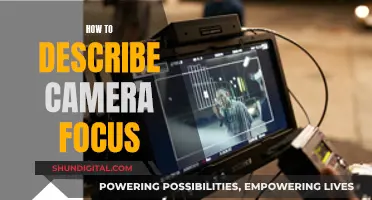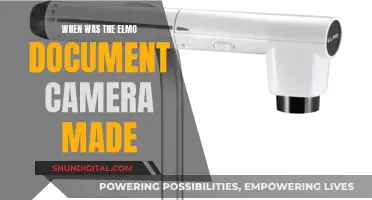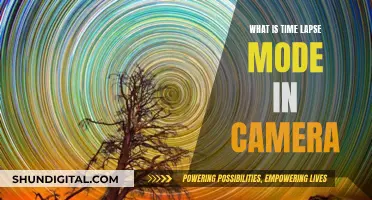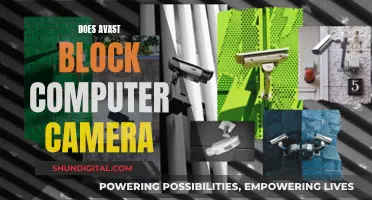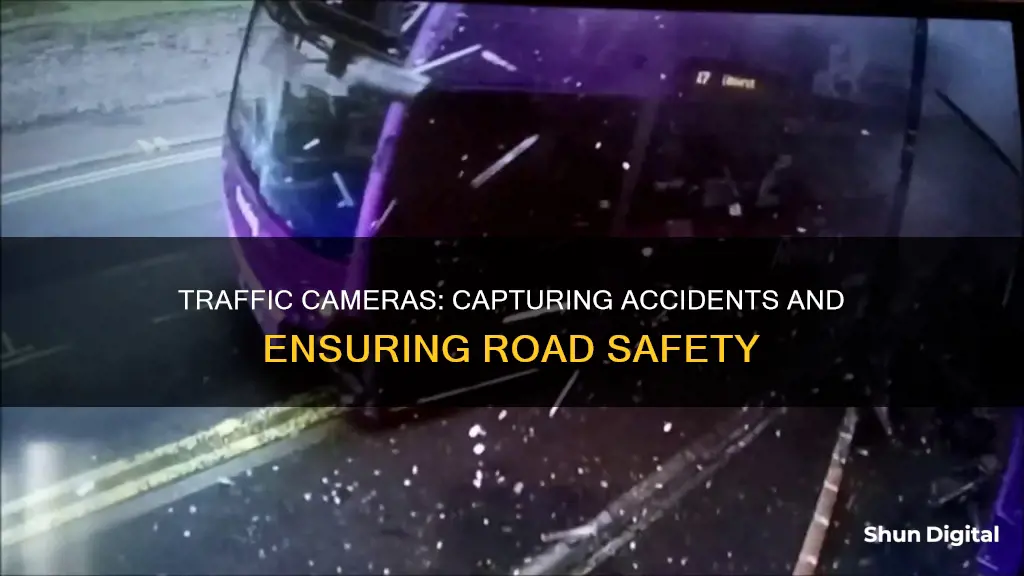
Traffic cameras are an increasingly common feature on roads across the United States, and they can be a valuable tool for improving road safety and determining liability in the event of an accident. While their primary purpose is to deter people from breaking traffic rules, they can also capture footage of accidents as they happen, providing crucial evidence for insurance claims and legal proceedings. However, obtaining this footage is not always straightforward, and it may be necessary to involve the courts and legal professionals to access it.
| Characteristics | Values |
|---|---|
| Purpose | To deter people from running red lights and catch drivers in the act of traffic violations. |
| Evidence | Can be used as evidence in court and for insurance claims. |
| Effectiveness | Reduces the number of vehicles running red lights. |
| Effectiveness | Can increase rear-end accidents. |
| Effectiveness | Reduces the fatal red light running crash rate of large cities by 21% and the rate of all types of fatal crashes at signalized intersections by 14%. |
| Privacy | Do not violate privacy as driving is a regulated activity. |
| Storage | The amount of time government agencies store traffic cam footage depends on the location and type of camera but can be as short as 24-72 hours. |
What You'll Learn

Traffic cameras can help determine liability and strengthen your case
Traffic cameras can be instrumental in determining liability and strengthening your case after a car accident. Here's how:
Evidence Collection:
Traffic cameras, including red-light and speed cameras, are often installed at intersections or near traffic lights to capture violations such as illegal turns, failure to stop, or running red lights. This footage can provide valuable evidence to establish the other driver's fault in an accident. The cameras are positioned to capture license plates, and footage is typically stored for a finite period, ranging from a few days to over a year, depending on the state and agency.
Witness Testimony:
Traffic cameras serve as silent witnesses that provide an objective account of the incident. They are always present and do not rely on human memory or observations, which can be unreliable, especially in stressful situations. This makes them more dependable than witness testimony, which may be challenging to obtain or unreliable.
Accident Reconstruction:
By reviewing the footage, you can gain a different perspective on the accident and narrow down vehicle positions and speeds. This information can be crucial in reconstructing the events leading up to the collision and identifying the at-fault driver.
Strengthening Your Case:
Having camera footage that proves the other driver's responsibility can significantly strengthen your case. It can serve as indisputable evidence, making it harder for the defendant's legal team to deny their client's culpability. This evidence, combined with other sources such as dashcam footage, eyewitness accounts, and cellphone videos, can make your personal injury claim more robust and increase your chances of a successful outcome.
Legal Support:
Obtaining traffic camera footage is not always a straightforward process. It often requires knowledge of the specific procedures and jurisdictions involved. Consulting an experienced car accident lawyer is advisable, as they can guide you through the process, help you navigate any legal complexities, and ensure you meet all the requirements to access the footage. They can also assist in building a solid case and seeking fair compensation for your injuries and damages.
Fight Traffic Camera Tickets: Your Legal Defense Strategy
You may want to see also

They are especially useful for accidents at intersections
Traffic cameras are a common sight in cities across the United States, and they are often installed to monitor and manage traffic flow at busy intersections. While these cameras are typically used for real-time traffic management, they can also be useful for capturing accidents, especially at intersections.
Intersection accidents, also known as "T-bone" or "angle" accidents, are a serious concern at busy crossings. Traffic cameras can be instrumental in capturing these incidents and providing valuable evidence for accident investigations and insurance claims. They are especially useful for accidents at intersections for several reasons:
- Reducing Cross-Street Collisions: Traffic cameras, particularly red-light cameras, aim to reduce cross-street collisions by deterring drivers from running red lights. Studies have shown that camera programs are effective in decreasing the number of vehicles running red lights, which can reduce the number of T-bone accidents.
- Evidence Collection: Traffic camera footage can provide objective evidence of what happened during an accident. It can help identify the at-fault party, assess the severity of the accident, and strengthen insurance claims. This visual evidence makes it more challenging for the responsible party to dispute their role in the incident.
- Emergency Response: Intersection cameras provide real-time video footage to traffic management centers, enabling quick incident response. In the event of an accident, law enforcement and emergency services can be promptly dispatched to the scene, potentially reducing the impact and severity of the incident.
- Traffic Data Collection: In addition to capturing accidents, intersection cameras collect traffic data. This data helps improve road safety and traffic flow by identifying problem areas and implementing necessary changes.
- License Plate Identification: Traffic cameras are often positioned to capture license plate numbers of violating vehicles. This information is crucial for issuing traffic citations and identifying the responsible parties in an accident.
While traffic cameras can be beneficial, it is important to note that they do not always capture sustained footage. They may only record for a short duration when triggered by specific events, such as a vehicle running a red light. Additionally, accessing footage from these cameras can be challenging, as they are primarily used for real-time traffic management, and the stored footage may be deleted after a short period.
In summary, traffic cameras, especially those at intersections, can be extremely useful for capturing accidents and providing valuable evidence. They play a vital role in improving road safety, reducing specific types of accidents, and facilitating accident investigations and insurance claims.
Camera Battery Maintenance: How Often to Replace?
You may want to see also

They don't always capture everything you need
Traffic cameras are usually positioned to capture the license plates of vehicles that violate traffic laws. This means that they are not always aimed directly into the vehicle. For example, a traffic camera may not capture footage of a distracted driver leaning over to grab something from the floor or texting. Similarly, a traffic camera may not show a driver who is intoxicated and swerving in the road. If a passenger in the vehicle swaps places with the driver to avoid drunk driving charges, the camera may not show who was driving.
While traffic camera footage can be useful in some cases, it is not always necessary or sufficient to prove fault in a car accident. In some cases, other types of evidence, such as eyewitness accounts or cellphone video footage, may be more useful. It's important to note that traffic camera footage is not always admissible in court and may be challenged on various grounds, such as questioning the accuracy or reliability of the technology or arguing that the cameras violate privacy rights.
Additionally, the process of obtaining traffic camera footage can be complicated and time-consuming. It may require contacting the appropriate government agency, filing a request, and providing specific details about the accident, such as the date, time, and location. In some cases, a subpoena from the court may be needed to access the footage.
Furthermore, the storage time for traffic camera footage varies depending on the state, county, and agency. Some agencies may store the footage for more than a year, while others may delete it after 24-72 hours. As a result, it's crucial to request the footage as soon as possible after an accident.
In conclusion, while traffic cameras can be useful in capturing accidents and providing evidence, they don't always capture everything needed to determine fault or build a legal case. It's important to consider other sources of evidence and seek the help of a legal professional when dealing with car accident claims.
Charging the Panasonic Leica Dicomar Camera: A Step-by-Step Guide
You may want to see also

Footage is often stored for a finite period
The duration for which traffic camera footage is stored varies from one jurisdiction to another. In general, most jurisdictions keep the footage for a period of 30 to 90 days before it is deleted or overwritten. For example, in New York City, the Department of Transportation stores traffic camera footage for 30 days before it is deleted, while in Los Angeles, California, traffic camera footage is stored for up to five years.
The storage duration of traffic camera footage depends on the policies set by local authorities and the purpose for which it was recorded. For instance, in California, red light camera footage must be retained for at least 30 days but can be kept longer if needed for an investigation or legal proceeding. On the other hand, in New York City, speed camera footage must be deleted after 60 days unless it is needed as evidence in a court case.
There is no standard time frame for storing traffic camera footage, and it can range from a few days to several years. Some jurisdictions may keep it for as little as 24 hours, while others may retain it for up to 90 days. In some cases, the footage may be kept indefinitely if it is needed for an ongoing investigation or legal proceeding.
The storage technology used also affects how long traffic camera footage can be stored. Some systems use hard drives or solid-state drives with limited storage capacities, while others use cloud-based storage solutions that offer virtually unlimited storage capacity.
To address privacy concerns, some jurisdictions have implemented data protection regulations that limit how long personal information can be stored. For example, under European Union regulations (GDPR), personal data must be deleted after a certain period unless there is a legitimate reason for retaining it. Encryption and access controls can also help reduce the risk of unauthorized access or misuse of personal information.
It is important to note that the retention of traffic camera footage may be subject to legal requirements, and individuals may need to seek legal assistance to access it promptly for their cases.
Salvaging Your Camera After a Battery Leak
You may want to see also

They can be useful in reducing the number of accidents
Traffic cameras can be useful in reducing the number of accidents. While some studies have found that they do not reduce the total number of accidents, there is evidence that they can decrease the number of vehicles running red lights and reduce the severity of accidents.
For example, a study in Virginia found that red-light cameras reduced the number of total drivers running red lights by 67%. Similarly, speed cameras are believed to reduce the severity of collisions by lowering the speed of motor vehicles, which results in less kinetic energy transferred to the vehicle's occupants during a crash.
In addition, some studies have found that traffic cameras can lead to a reduction in the total number of accidents. For instance, a study in Barcelona showed a 27% decrease in the number of road traffic collisions after the installation of speed cameras.
However, the effectiveness of traffic cameras in reducing accidents may depend on various factors such as location, type of camera, and traffic patterns. Some studies have found that red-light cameras can increase the number of rear-end collisions as drivers tend to brake harder and more abruptly to avoid running a red light. Therefore, the overall effect of traffic cameras on accident reduction is still a subject of ongoing research and debate.
Honeywell Cameras: Where Are They Manufactured?
You may want to see also
Frequently asked questions
Traffic cameras are usually triggered by movement and capture a photo or a short video of around 12 seconds.
Yes, in most states, traffic camera footage is considered admissible in court. It is often used to support traffic violation citations.
The process depends on the jurisdiction. In some cases, you can request the footage directly from the relevant agency, while in other cases, you may need to obtain a subpoena from the court.
Traffic camera footage can be valuable in establishing liability for a car accident, especially in cases where the other driver denies responsibility. It can also help to corroborate your claims and strengthen your case.



